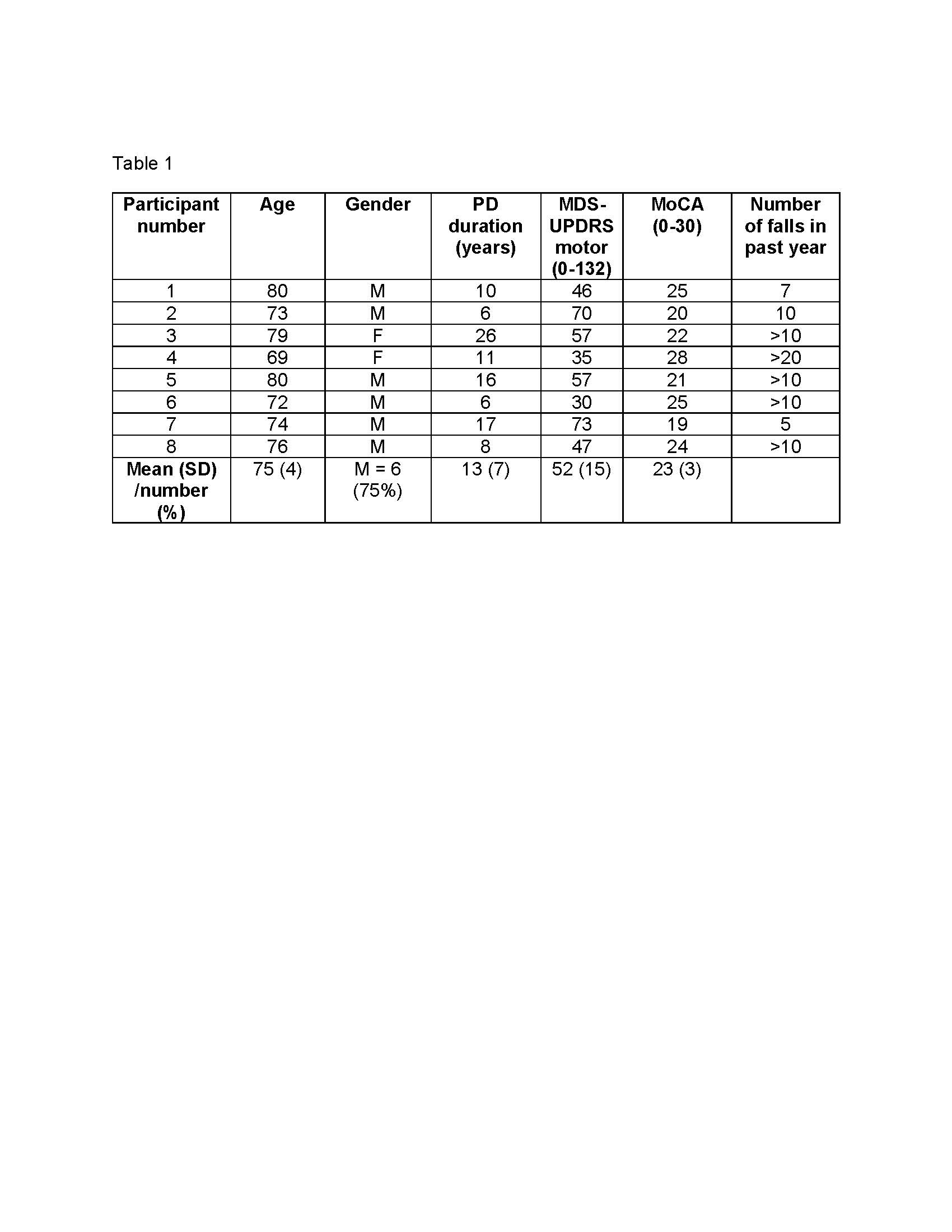Objective: To explore perceptions regarding fall risk and how these perceptions influence behavior in people with Parkinson’s disease (PD) and a history of falls, and their care-partners.
Background: Most people with PD will develop a problem with falls, with many people experiencing frequent falls. Exercise can reduce falls in people with milder disease, but not in those with more severe disease, and overall fall rates remain unacceptably high. Associations between fall rates and fear of falling have been found to be inconsistent. An understanding of people’s perception of their fall risk and the influence of this perception on which activities people choose to perform, and how they choose to perform them, will aid in the development of fall prevention and management programs.
Method: Semi-structured interviews were conducted with people with PD and their care-partners. Participants with PD were able to walk with or without an aid and had fallen at least once in the prior 6 months. Those with mild to moderate cognitive impairment were included. Interviews were transcribed verbatim and analyzed using a constructivist grounded theory methodology.
Results: Eight participants [table 1] with moderate to advanced PD and their care-partners were interviewed. Four themes emerged: being fearful of falls – especially of injurious falls; falls are a part of Parkinson’s – falls were viewed as an inevitable consequence of disease progression; desire to lead a normal life – wanting to be independent and socially active despite the risk of falls; and not considering the consequences of falls – with an apparent reluctance and/or forgetting to change behavior. Overall, participants described constantly weighing up between perceived fall risk and desire to perform an activity, with consequent behavior ranging from unnecessary avoidance/adaptation, to unnecessary risk taking.
Conclusion: It is important for therapists to develop an understanding of how each individual with PD views their fall risk, and how they balance this risk in the context of their daily activities. This will facilitate fall prevention interventions which incorporate collaborative problem solving and goal setting, and therefore provide effective fall prevention and management options that are acceptable to the individual.
Previous presentation:
Transform Physiotherapy Conference, Australia, October 2019.
To cite this abstract in AMA style:
Y. Huang, J. Song, L. Clemson, N. Allen. How does the perception of fall risk influence behavior in people with Parkinson’s disease? [abstract]. Mov Disord. 2020; 35 (suppl 1). https://www.mdsabstracts.org/abstract/how-does-the-perception-of-fall-risk-influence-behavior-in-people-with-parkinsons-disease/. Accessed April 21, 2025.« Back to MDS Virtual Congress 2020
MDS Abstracts - https://www.mdsabstracts.org/abstract/how-does-the-perception-of-fall-risk-influence-behavior-in-people-with-parkinsons-disease/

